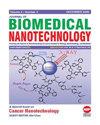Protein–Protein Interaction Network Construction and Differential miRNA Target Gene Prediction in Ovarian Cancer by Bioinformatics Analysis
IF 2.9
4区 医学
Q1 Medicine
引用次数: 0
Abstract
Our research focused on investigating genetic changes in ovarian cancer (OV) by constructing a protein–protein interaction network. In addition, we utilized data mining techniques that were specifically tailored for OV. To gather differentially expressed miRNAs, we accessed the GEO database. The differential expression was administrated using R language. We used three different bioinformatics algorithms to identify the candidate genes of the altered microRNAs. Using Cytoscape, we created a vision constructure between these miRNAs and the corresponding goals. This allowed us to identify specific hub genes. To validate our findings, we confirmed the presence of essential genes and autophagy-related genes in both the GEPIA and TCGA databases. Through this process, we were able to pinpoint the connection between them. In total, we identified nine miRNAs that showed differential expression. Together, these miRNAs predicted the presence of 488 objective gene. Among them, the FOS demonstrated statistical significance when evaluated in both the GEPIA and TCGA. Importantly, it should be highlighted that FOS has been linked to ovarian cancer prognosis.通过生物信息学分析构建蛋白质-蛋白质相互作用网络并预测卵巢癌中的差异miRNA靶基因
我们的研究重点是通过构建蛋白质-蛋白质相互作用网络,研究卵巢癌(OV)的基因变化。此外,我们还利用了专门针对卵巢癌的数据挖掘技术。为了收集差异表达的 miRNA,我们访问了 GEO 数据库。我们使用 R 语言对差异表达进行了管理。我们使用了三种不同的生物信息学算法来确定发生变化的 microRNA 的候选基因。我们使用 Cytoscape 在这些 miRNA 和相应目标之间创建了一个视觉结构。这使我们能够识别特定的枢纽基因。为了验证我们的研究结果,我们在 GEPIA 和 TCGA 数据库中确认了重要基因和自噬相关基因的存在。通过这一过程,我们确定了它们之间的联系。我们总共发现了九种出现差异表达的 miRNA。这些 miRNA 共预测了 488 个客观基因的存在。其中,FOS 在 GEPIA 和 TCGA 的评估中均显示出统计学意义。重要的是,FOS 与卵巢癌的预后有关。
本文章由计算机程序翻译,如有差异,请以英文原文为准。
求助全文
约1分钟内获得全文
求助全文
来源期刊
CiteScore
4.30
自引率
17.20%
发文量
145
审稿时长
2.3 months
期刊介绍:
Information not localized

 求助内容:
求助内容: 应助结果提醒方式:
应助结果提醒方式:


